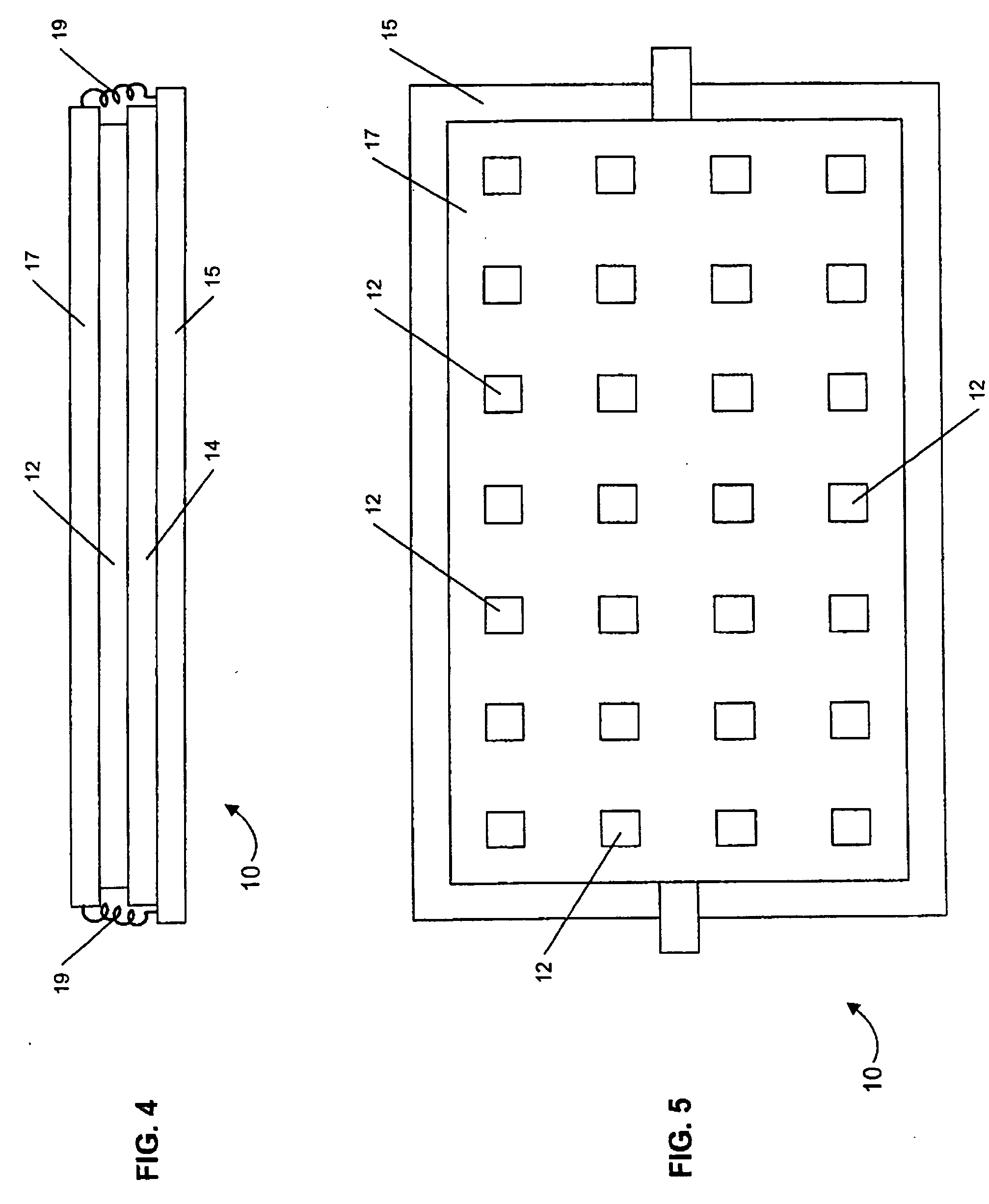Sensor and sensor array having improved selectivity
a sensor array and selectivity technology, applied in the field of chemical sensors, can solve the problems of low capacitance change, and achieve the effect of accurately determining the presence of particular analytes and increasing sensitivity
- Summary
- Abstract
- Description
- Claims
- Application Information
AI Technical Summary
Benefits of technology
Problems solved by technology
Method used
Image
Examples
Embodiment Construction
[0025] In accordance with the present invention, a sensor is described that provides distinct advantages when compared to those of the prior art. The invention can best be understood with reference to the accompanying drawing figures.
[0026] Referring now to the drawings, a sensor according to the present invention is generally designated by reference numeral 10 in FIGS. 1 and 2. The sensor 10 comprises a reactive layer 12 disposed between a base plate 14 and a movable plate, which in this embodiment is shown as cantilever 16. A capacitive sensing circuit 18 is connected between the base plate 14 and cantilever 16 for detecting a change in capacitance (ΔCcapacitance) therebetween. Preferably, the sensor 10 comprises a MEMS (micro-electromechanical systems) device with the base plate 14 and cantilever 16 attached to a substrate 15.
[0027] Preferably, the reactive layer 12 comprises a polymer material. The reactive layer 12 can comprise one of any number of materials specifically sele...
PUM
| Property | Measurement | Unit |
|---|---|---|
| dielectric constants | aaaaa | aaaaa |
| conductive | aaaaa | aaaaa |
| capacitance | aaaaa | aaaaa |
Abstract
Description
Claims
Application Information
 Login to View More
Login to View More - R&D
- Intellectual Property
- Life Sciences
- Materials
- Tech Scout
- Unparalleled Data Quality
- Higher Quality Content
- 60% Fewer Hallucinations
Browse by: Latest US Patents, China's latest patents, Technical Efficacy Thesaurus, Application Domain, Technology Topic, Popular Technical Reports.
© 2025 PatSnap. All rights reserved.Legal|Privacy policy|Modern Slavery Act Transparency Statement|Sitemap|About US| Contact US: help@patsnap.com



